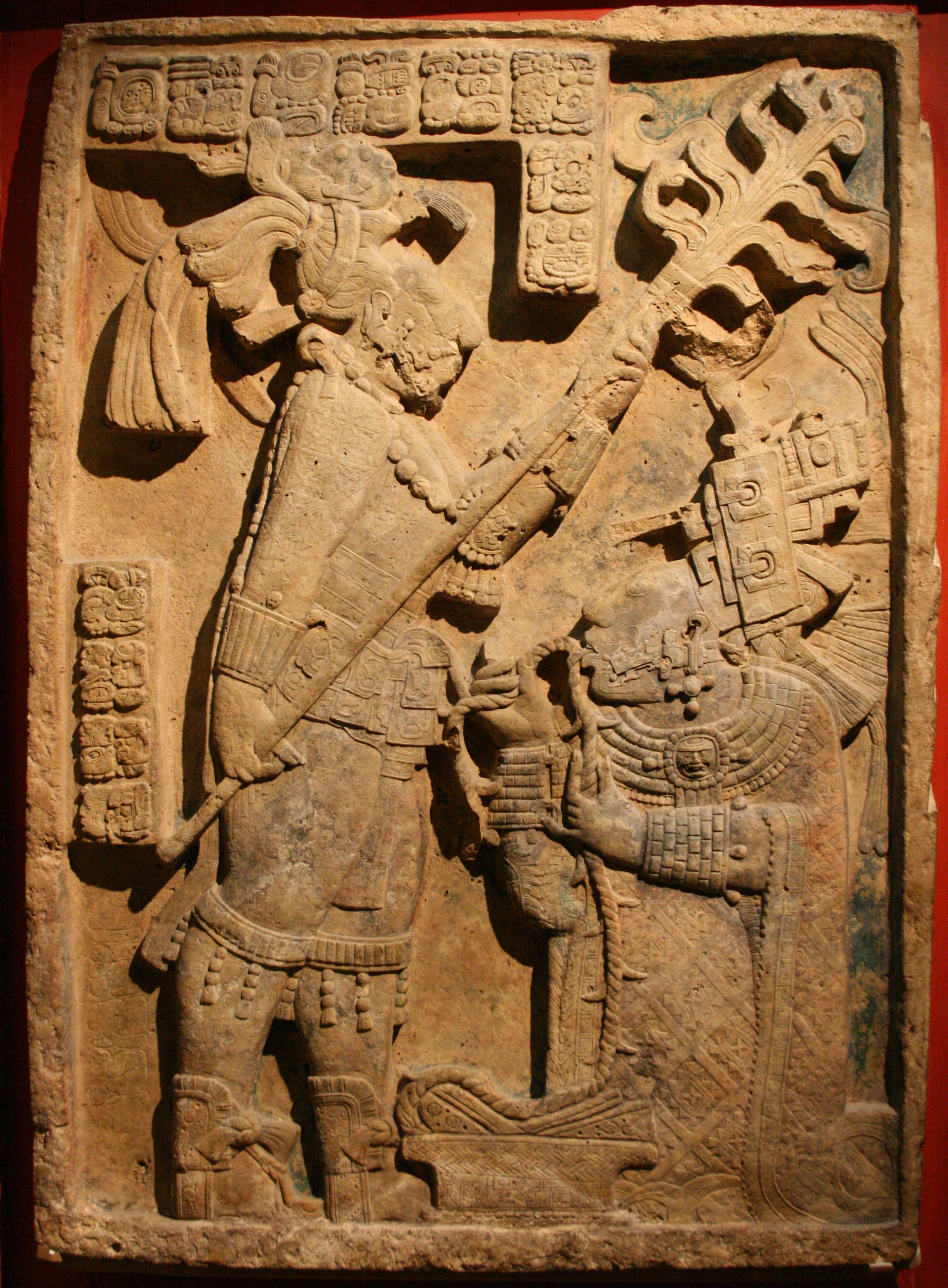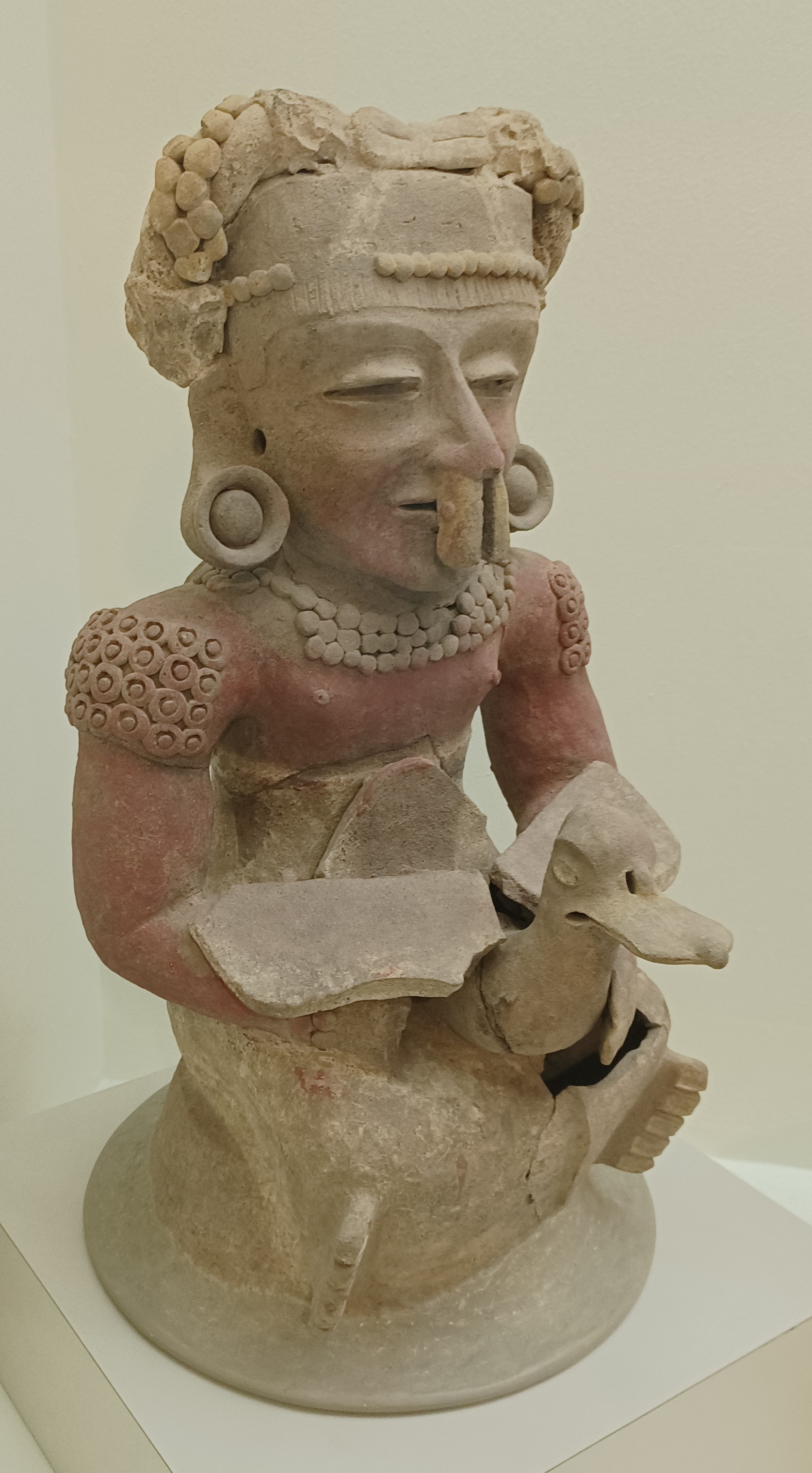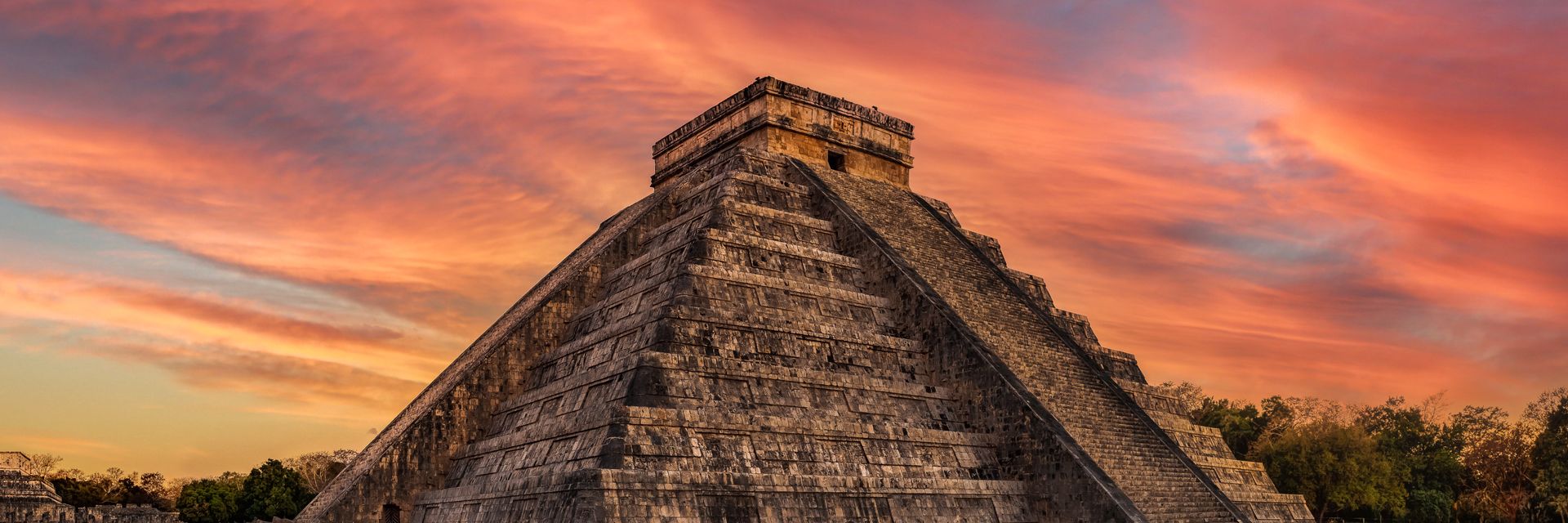The ancient Maya bloodletting rituals were gory, gruesome, and grotesque. They were also integral to Maya beliefs about life, knowledge, and the nature of reality.
◊
Blood, that red liquid coursing throughout our bodies, does a lot of interesting things to keep us alive. For example, it transports oxygen from our lungs to our tissues, moves nutrients from our small intestines to cells and tissues, carries waste to the liver and kidneys for filtering, and transports antibodies and cells to fight off infections. In short, blood is a crucial feature of almost all life forms.
Blood also repulses or attracts – perhaps both, simultaneously. How else do we explain, for example, the terrified glee children exhibit when they first see their own blood ooze from a cut? How else do we explain, depending on the culture, the pride or shame girls feel when they experience the end of their first menstrual cycle?
While ignorant of blood’s biological details, the ancient Maya knew it was significant. In fact, so important was blood to that extraordinary Mesoamerican civilization's belief systems that it was used as an integral part of the Maya’s major rituals.
For more on the fascinating Ancient Mayan civilization, check out the MagellanTV documentary Maya: Ancient Metropolis
Blood and Guts in Maya Art and Rites
Much of our knowledge of non-lethal yet gruesome bloodletting rituals comes from Maya art – statues, stone, wall, and door carvings, murals, painted pottery, and hieroglyphic texts. They depict, for example, rites of passage involving ruling and other elite males engaged in self-mutilation, slashing or piercing their penises with obsidian scalpel-like blades.
Using various tools, both men and women perforated their lips and tongues to initiate altered states of consciousness – something like trances – during which they had visions of or communicated with the gods or their ancestors. Stingray spines and sharpened bones were among the tools of these bloodletting practices.



Depiction of human sacrifice (Credit: Sirio Restani, via Wikimedia Commons)
If that sort of thing makes you squirm, at least it didn’t end with your guts tumbling out of your body or your head landing with a thud on a stone floor. Human sacrifices were de rigueur at building dedications, for example, or the installations of new rulers. The details are gory, but each element had specific political or religious significance.
Other ancient civilizations, including what are now China, Israel, Egypt, and parts of Europe, practiced blood sacrifices in the past.
We may arrogantly deride ignorance of scientific knowledge or be horrified by the savagery of the rituals, but the same people also developed advanced mathematical systems, had sophisticated astronomical knowledge, and engineered some extraordinary architecture. So, before dismissing Maya practices as brutish or primitive, we should take a closer look at some conceptual features of those practices and pull back on the reins of our hubris.
Blood Ties to Ch’ul – the Life Force
Sociologists and cultural anthropologists explain rituals in terms of reinforcing social bonds within and across generations – particularly when group members are not genetically related. When those rituals are costly, both in terms of ceremonial extravagance and personal suffering, the bonds are thought to be further strengthened. For instance, Maya kings, believed to be divinely anointed, were thought to have a sacred duty to self-mutilate, but also thereby to express their legitimacy.
We can look at blood sacrifices through yet another conceptual lens. Ch’ul, the Mayan term for a person’s vital essence or life force, was thought to be found in (but not identical to) blood. Bloodletting was considered a means of both communicating with that which is unseen – the gods, one’s ancestors – and that which nourishes.
The Mesoamerican civilization we know as the Maya spanned more than 3,000 years over a region of almost two million square miles.
Ch’ul was thought to be a particular type of itz, that power or truth pervading the cosmos. To effectively tap into that force is to bridge human and non-human, visible and invisible. This would be particularly important to people of any era or culture who believe that which is unseen is as significant, if not more so, than that which is visible.

Yachilàn Lintel 24: Lady Xoc, wife of king Shield jaguar II drawing blood. (Source: Collection of the British Museum/Michel Wal, via Wikimedia Commons)
To ‘see’ what is unseeable is to grasp reality. To grasp reality is to know. So, since specific bloodletting rituals enabled visions of what is otherwise unseeable, these rituals enable modes of knowing. A particularly vivid depiction (Yaxhilàn Lintel 24) of such a vision shows a serpent rising from the blood spilled by Lady K’ab’al Xook, wife of Yachilan King Itzamnaaj B’alam II, as she pulls an obsidian-studded rope through a piercing in her tongue.
The Popol Vuh Reveals the Maya Idea of Creation
We typically think of creation as an event occurring in time. But what about the start of time itself? Surely, the start of time can’t be in time. Perhaps it’s some form of that realization that animated ancient Maya beliefs about creation. They wrote Popul Vuh (or Book of the Community) after Spanish colonization to preserve Maya thinking on, for example, the nature of creation as a continual process. This is one source for a better understanding of what appear to us as inhumane and barbaric practices.
Maya civilization was not a continuously existing group of people, but (similar to the Greeks) collections of tribes, clans, and families who spoke different Mayan languages but shared various cultures and traditions.
Earth’s creation, the Popol Vuh tells us, came about through the collaboration of a handful of divinities heretofore in the water and sky. Humans were eventually created to praise their makers, which other creatures could not do. Versions of this sort of creation story abound in ancient traditions around the globe. All, or almost all, share a similar implication, namely that creation is separated from its creators.
Reunification, or at least communion, becomes of paramount importance. In this respect, the Maya’s essential humanity was no different from other civilizations with similar beliefs. It also helps us realize that the conceptual underpinnings of the seemingly bizarre sacrificial practices are not so far afield from some of the bases for our own contemporary traditions.
Blood Sacrifice, Blood Benefit
To sacrifice is to give up or offer something of value. Presumably, both parties – the one receiving the sacrifice and the one doing the sacrificing – benefit. Religious sacrifices are peculiar events, however. On the one hand, the idea of some sort of mutual benefit makes sense if a deity is somehow flawed, as seems to be the case with the Greek and Roman pantheons. On the other hand, there can’t be a mutual benefit when the deity is already perfect and doesn’t need anything, or because the deity doesn’t need anything an inferior being can offer, as is the case with the Abrahamic conception of divinity. Nevertheless, presumably the deity acknowledges the supplication.
As applied to the Maya practice of bloodletting, neither way of thinking about divinity accurately appreciates the specific complexity of Maya beliefs. We have no good reason to think, for example, that Maya practices were any less profound for the participants than Abraham’s near-sacrifice of Isaac is for adherents of Judaism or than transubstantiation – the belief that bread and wine change into the body and blood of Christ – is for many Christians, especially Catholics.
For the Maya, Blood Is Integral to Human Essence
Even apart from religious observance, we are all raised in particular traditions, from the familial habits of domestic life to peer norms learned at school and in the larger community. As adults, we gain a clearer understanding of how religious practices and political policies mold and reflect our beliefs about how things are – or should be. On the face of it, the rituals and traditions of foreign cultures – past and present – can be discomfiting. And though we may conclude that our initial reaction reflects an objection to some underlying value, we may come to the conclusion that the difference in practice is not a difference in fundamental beliefs.

Maya Artifact at the Museo Popol Vuh in Guatemala (Credit: Simon Burchell, via Wikimedia Commons)
For the ancient Mayan, blood served as both a conduit between worlds and a manifestation of the life force, or the process of continual creation. One interpretation is that itz and ch’ul are two aspects of a single reality or fundamental essence. Seeking to understand that essence is part of the human condition – at some level, we all want to understand the universe and our place in it. Considered from this standpoint, bloodletting rituals and other features of ancient Maya thought may come into sharper focus.
Maya Conceptions of Time, Knowledge, and Reality
It’s worth returning to the Popol Vuh creation account summarized earlier. The gods who eventually made humans out of maize had tried unsuccessfully multiple times before. Animals couldn’t talk, creatures fashioned out of mud could not hold their shape, and the wooden effigies, though like the eventual humans in important respects, had neither purpose nor the capacity “to keep the days.” In other words, they could not keep time.
Keeping time is a matter of “ordering” (tz’ak). From Aristotle to present day cosmologists, various accounts of the nature of time have gained and lost favor. Is time simply the way change is marked? Is time real, that is, a part of the fabric of the universe? Is time, instead, a structural feature of human cognition? Or are all these proposals fundamentally incomplete?
The ancient Maya answer brings together, in a coherent whole, a picture of reality and our place in it. Humans fashion time and order it through activities – including significant rituals. Absent this, activity would be chaos.


Paper reconstruction of the Maya Tzolkin calendar (Source: Croppy Peace Sign, via Wikimedia Commons)
The Tzolk’in calendar, for example, is an important element of such ordering, and with it the rituals that bring meaning and coherence to our lives. The 260-day calendar of rituals is thought to be based on the 9-month gestational period – and the growth cycle of the maize plant. The Maya numeral system is displayed, matched with named days, which give us a picture of the results of combining an original mathematical system with beliefs about the nature of time. The outline here does not do justice to the complexity of the calendar, but it does provide us with a basic framework for thinking more comprehensively about ancient Maya rituals. Understood in this context, time is intimately connected with the universe’s animating force, and so also blood.
Some contemporary Maya cultures practice rites that combine ancient beliefs and Catholicism which the Spanish brought in the early 16th century. The Totzil Maya of Chiapas, Mexico, for example, sacrifice a chicken at the altar of the Church of San Juan Chamula as part of a healing ritual.
Researchers make continual discoveries about the ancient Maya’s fascinating culture, aspects of which live on in contemporary Maya traditions practiced, for example, by the K’iche’ of Guatemala and Yucatec of the Yucatán Peninsula. External pressures like political and economic upheaval, and deforestation threaten their way of life. It would be a loss for us all if it is not preserved.
Ω
Mia Wood is a philosophy professor at Pierce College in Woodland Hills, California and an adjunct instructor at the University of Rhode Island, Community College of Rhode Island, and Providence College. She is also a MagellanTV staff writer interested in the intersection of philosophy and everything else. She lives in Little Compton, Rhode Island.
Title image: Chichén Itzá during sunset (Credit: jdross /adobe.stock.com)

